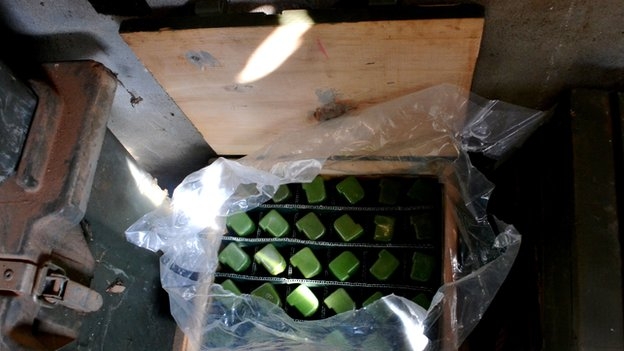
The grenades come from China, or Bulgaria. The mortars are Sudanese. The rocket launchers were made in Iran. The bullets are British, or Belgian or Czech. Spain and Cameroon provided the shotgun rounds. And so it goes on.
A detailed survey of the weapons currently circulating in the Central African Republic (CAR) offers some intriguing insights into the global arms industry, and the extent to which its output continues to find its way – legally or otherwise – into the hands of rebel armies.
The impact of the weapons trade can be lasting and devastating.
When arms were obtained by the Seleka – a coalition of largely Muslim insurgents that swept to power in CAR in 2013 – a civil war was triggered that went on to displace hundreds of thousands of civilians.
‘Small and easily concealed’
“Type 82-2 hand grenades are among the most widespread military item in CAR,” says the report, compiled by Britain’s Conflict Armament Research group, for the European Union.
Arms consignment in CAR The impact of the weapons trade can be lasting and devastating
Bullet holes in a car windscreen in CAR The Central African Republic has been in turmoil since rebels seized power in March 2013
“They are so common that they reportedly can be bought for the equivalent of around $0.50-$1.00 (£0.33-£0.66) each, less than a bottle of Coca-Cola,” the report says.
“Small and easily concealed, they have had a significant security impact, causing civilian injuries and deaths in Bangui and elsewhere throughout 2014.”
One batch of more than 25,000 Type 82.-2 grenades was traced by researchers to a 2006 consignment, manufactured in China, and – according to the packaging – destined for the “Royal Nepalese Army Headquarters”. The Nepalese army “insist they have never used grenades of this kind”.
‘Violation’
Some of the other weapons were looted from government arsenals. Others were smuggled, in the hands of foreign mercenaries, across porous borders. But many appear to have been flown into CAR by neighbouring states – including Sudan.
Source: BBC


